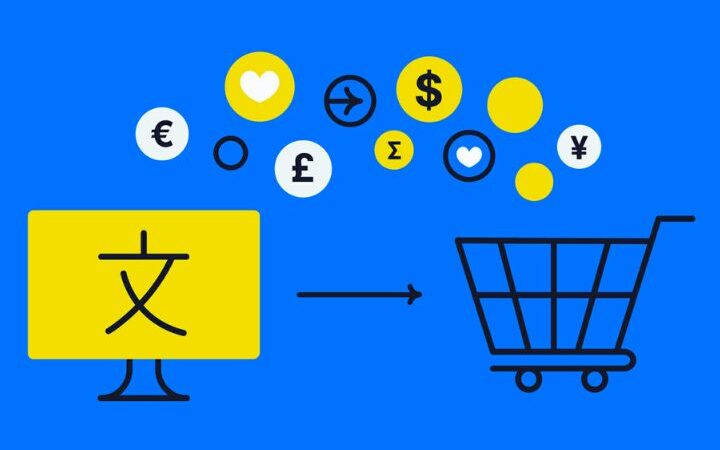Stop Loss And Take Profits: All The Information You Need

The take-profit/stop-loss feature is one of the most crucial tools for risk management that most traders use on a regular basis. For any Forex trader, having a thorough knowledge of these assets is essential. However, with the IQ Option platform, it is able to define take-profit and stop-loss levels for any CFD assets, including stocks, forex, cryptocurrencies, and commodities.
Today, we’ll discuss how to properly set stop loss and take profit levels. Together, we will explore the definitions of stop loss and take profit and examine practical examples of their use.
Table of Contents
What Do Stop-Loss And Take-Profit Mean?
The point at which a dealer wants the position to exit is known as the stop loss. Similar principles apply to take profits; by establishing this level, you are telling the trader that you want your position to be closed when it reaches that certain level.
Take profit is indeed a valuation that a trader decides is acceptable or sufficient in the event that the deal turns out well for them. When the take profit is reached, if that variables . in this study of profit is attained, the contract will immediately close.
Stop loss is indeed the maximum amount of loss that a dealer is willing to tolerate in the event that their prognosis proves incorrect. The agreement will automatically close once the predetermined threshold of loss is reached, preventing the potential loss of the entire investment.
Cons And Benefits
Why a trader should set these levels rather than trading without them may not always be obvious. Let’s look more closely at these tools since they do have advantages and disadvantages, bitcoin loophole gives you a wider view of this.
Pros:
- Trading risks may be managed by traders by setting stop loss and take profit levels. By setting limits, traders can more effectively work with the proper loss amounts and the necessary results.
- When losses are managed properly, bigger and more costly losses may be avoided.
- Once the stages are applied, there is no reason to keep an eye on the deal because they will be activated automatically.
- Utilizing auto close levels helps remove the incentive to hold the asset for “a little while longer,” which is an emotional component.
Cons
- Rapid price swings could lead to slippage, which would push the deal’s close further away from the designated stop loss. Slippage, however, can also be advantageous to a trader if it leads to the trade closing above the first chosen take profit level.
- A little price movement could cause both stop loss and stronger position orders to be activated, leading to a needless selling of the asset.
- If the price continues to move in the trader’s favour, the take profit may reduce the potential profits.
- How do you determine take-profit and stop-loss levels?
- The steps below can be used to establish stop loss and take-profit:
- Select the trading instrument of your choice (Forex, Crypto, etc.)
- Select “Auto Close” and enter the desired capital investment and multiplier.
- Set the stop loss (“When loss is”) and take profit (“When profit is”) values.
- By selecting “Buy” or “Sell” when the proper levels have been set, a trader can open a position.
- Calculator for take-profit and stop-loss
How can I choose the precise location for my take gain and secure future orders?
The levels that traders feel comfortable working with are typically chosen by them. The stop loss will be greatly influenced by the trader’s overall capital, as well as the investment amount. Resistance and support levels can be used as reference points by traders. Using the calculator in the traderoom is another option for determining the acceptable level of loss. You can calculate a sum using your investment using the calculator, which may be useful for both establishing a stop loss for trading strategies
Adding machine for assuming benefit and stop-misfortune
Added attributes
Stop misfortune as opposed to the following stop
The following stop capability on Forex as well as other CFD instruments is one more captivating choice proposed to prepared brokers. What recognizes an ordinarily prevent misfortune from the following stop misfortune?
A stop misfortune request doesn’t actually change after it is laid out. Regardless of whether the resource moves against the dealer’s projection, the following stop won’t move (not for the merchant). Notwithstanding, the huge contrast is that on the off chance that the cost is moving for the broker, the following stop will follow the development, moving a similar measure of pips from its underlying position.
For instance, for a long (“Purchase”) position for each ten pennies that the cost rises, the following stop misfortune will likewise move up ten pennies. Be that as it may, assuming the cost falls ten pennies, the stop misfortune won’t move. This sort of a stop misfortune is intended to protect the broker from critical misfortunes, while locking the conceivable positive results.
Following stop misfortune on the intelligence level Choice stage
Both following stop misfortune and normal stop misfortune can possibly help dealers with cash the board. In light of their methodology, dealers can settle on the choice that turns out best for them.
Use equilibrium to keep position open
One more element for risk the board objects is the “Utilization balance..” choice. By empowering this component, a merchant permits the specialist to deduct assets from the equilibrium to keep the arrangement running in the event that it arrives at the standard auto close level.
It is vital to take note of that the assets get deducted provided that the arrangement comes to the autoclose level. The equilibrium isn’t utilized assuming that the resource is moving for the merchant.
“Use equilibrium to keep position open” include
The assets deducted from the equilibrium will be returned on the off chance that the cost switches its development and goes in the dealer’s approval. Nonetheless, in the event that the arrangement closes with a misfortune, the assets are not returned.
This choice might be reasonable for merchants who wish to keep the arrangement running regardless of whether it is in a misfortune, yet it is critical to take note of that it could get very hazardous and clear out the equilibrium totally. This element requires oversight when utilized by fledgling merchants.
Bottom Line
At the point when the assume benefit and stop misfortune highlights are made sense of, they are not hard to get a handle on. These levels may be valuable for any dealer who treats risk the board in a serious way. The main piece of using them is settling on their position since force assumes an enormous part in exchanging.






